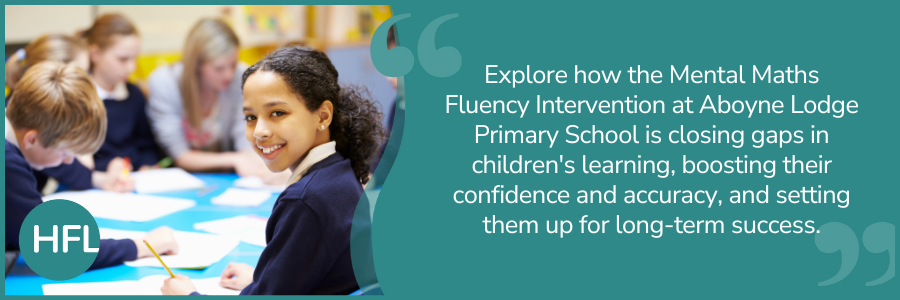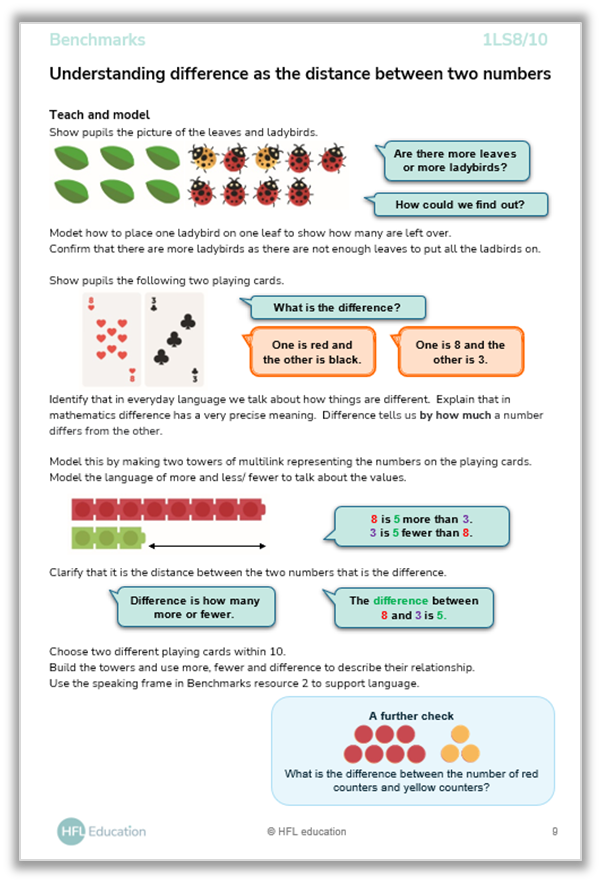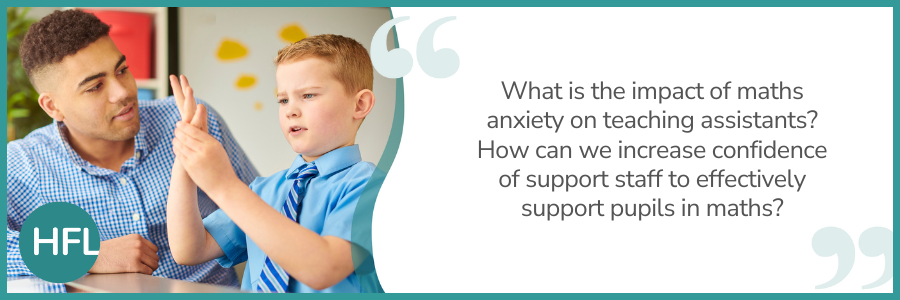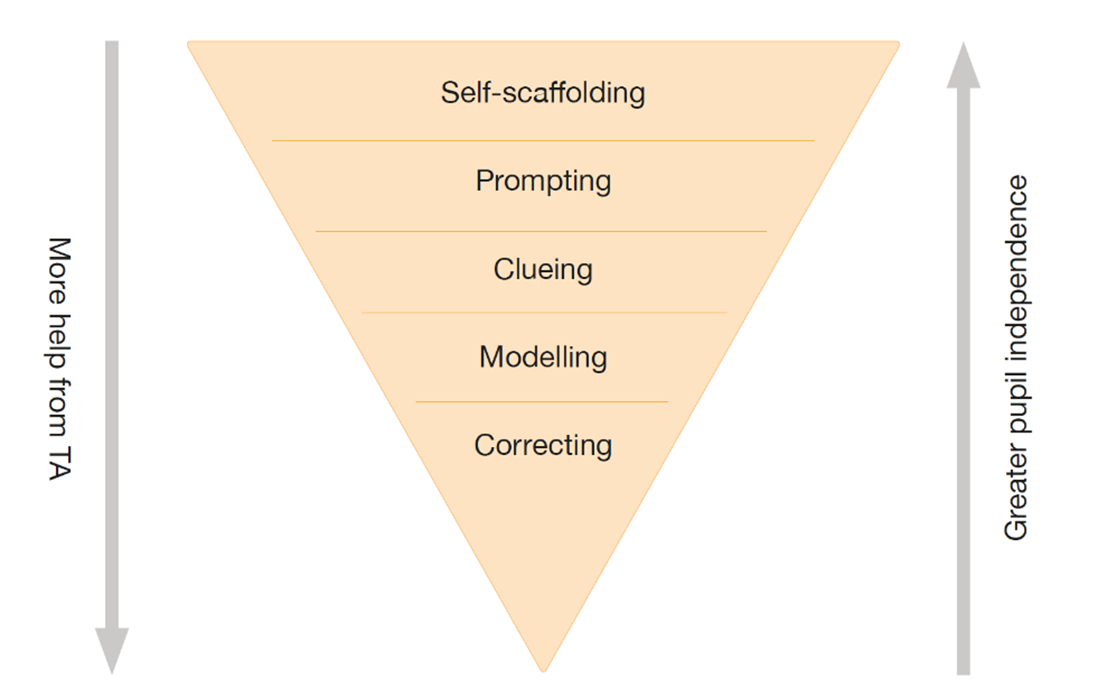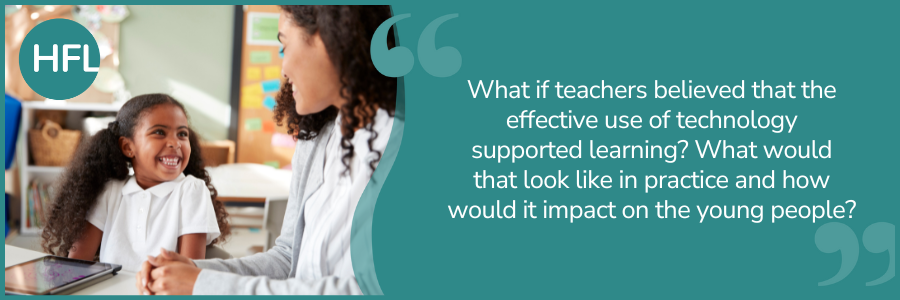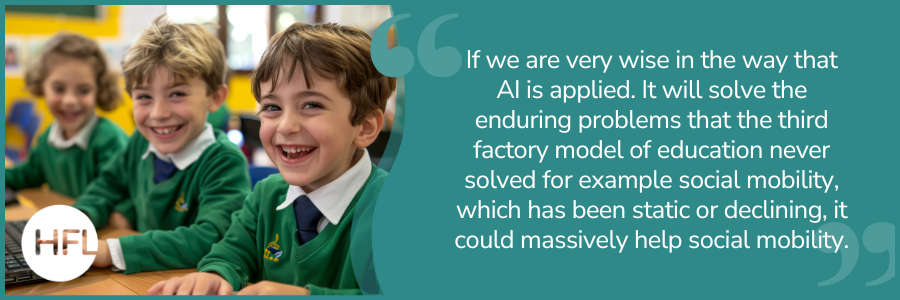Spoken language: Reflecting on Ofsted’s English education subject report
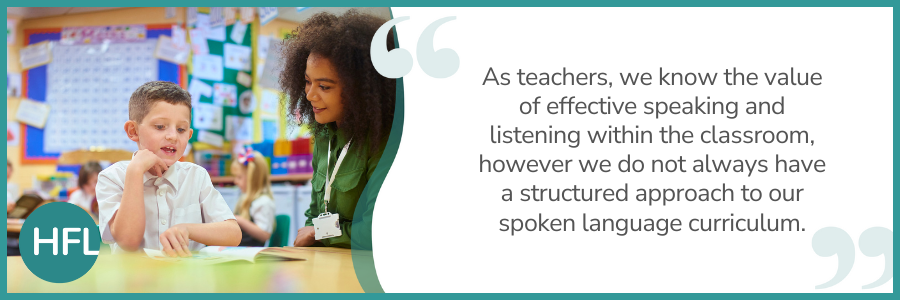
In March of this year, Ofsted released ‘Telling the story: the English education subject report’, building on the English research review published in 2022. The aim of the report is to share common strengths and areas for development identified in inspections, to support the development of the English curriculum more widely.
Within each section, the English report explores the following topics:
- curriculum
- pedagogy
- assessment
- school systems
- the impact of the above on what pupils learn
Context
The opening paragraph of the report lays out the vital role that English plays as a gateway to learning across all subject disciplines through the domains of reading, writing and spoken language:
English holds a unique place in our curriculum. This foundation is essential for all that pupils will go on to learn during their formal education and throughout their lives, including in subjects beyond English.
Let’s take a ‘deep dive’ into spoken language…
Within the summary conclusions of the report, the following findings were drawn about the curriculum for spoken language:
Schools (often) do not consider spoken language well in their English curriculum, although they understand that spoken language underpins pupils’ reading and writing development.
Although a generalised statement, it may be worth pausing for thought to consider our own practice and curriculum development for spoken language.
We could ask ourselves:
- Is spoken language considered and planned for in our English curriculum?
- Do we provide rich and meaningful opportunities for pupils to use talk to develop reading and writing?
- How does our curriculum facilitate the progression of pupils’ speaking and listening skills over time?
- Is spoken language used to enhance learning across the curriculum?
And, perhaps most importantly:
- How do we teach the skills of spoken language?
When digging deeper into the practice seen during inspections, the report suggests that schools are not always clear about how to teach the principles of spoken language. Leaders may choose to explore how speaking and listening is currently used in their school and identify any strengths and areas for development when it comes to teaching and facilitating spoken language development. We need to ensure children are being taught the skills they need to develop their spoken language, rather than simply practising them.
Opportunities for spoken language development
In EYFS, spoken language development is often part of everyday practice as children are still developing their skills of communication, early reading and writing. The use of rhymes, songs and re-telling of familiar stories can underpin much of the English learning which takes place. The English report indicates that where this has been thoughtfully considered, this approach develops children’s understanding, use of vocabulary and language structures.
However, when moving into the primary phase, the report suggests that, often, schools lack an explicit curriculum for developing spoken language. HFL Education's spoken language progression guidance can support leaders in exploring the statutory content for spoken language across domains, and seeing how the statements which span KS1 and KS2 can be covered and developed across the year groups. The document aims to provide an insightful and useful breakdown for teachers as a foundation for supporting pupils’ progress.
Although opportunities for debate, class assemblies and school productions can be commonplace, the report summarises that not all children participate in these activities, and that the principles of spoken language are not always threaded through daily teaching and learning. We need to consider the following question:
- Does our curriculum enable all pupils to access the skills needed to communicate effectively to a range of audiences and for a range of purposes?
Spoken language and writing
The Teacher Assessment Framework for writing at the end of key stage 2, explicitly references:
Working at the expected standard: | select vocabulary and grammatical structures that reflect what the writing requires, doing this mostly appropriately (e.g. using contracted forms in dialogues in narrative…) |
Working at greater depth: | distinguish between the language of speech and writing and choose the appropriate register |
The English report concludes that the knowledge required to distinguish the difference between spoken and written language is not always taught. Yet, we are striving to ensure our pupils can translate this skill into their writing – an interesting juxtaposition of these two strands of English. It is important that we value children’s spoken language, while helping them to recognise and use standardised grammar in their written work.
Oral rehearsal is often one of the most effective tools for allowing pupils time to practise their thinking ahead of writing. It allows children to rehearse the required standardised grammatical structures used in writing, which are not always used in spoken language. However, we also need to ensure that pupils are given opportunities to use spoken language, not just as a tool to aid writing, but as a tool for effective communication more widely.
Vocabulary development
The Oxford Language Report 2023-2024, based on surveys with over 800 teachers, parents and carers in the UK, reported that an average of 4 out of 10 pupils have fallen behind in their vocabulary development to the extent that it impacts on their learning.
Language-rich learning environments which develop the skills needed to communicate proficiently, and develop spoken language to aid comprehension and composition, could help to address this deficit. A dialogic approach to teaching can weave spoken language into teaching across the curriculum, with positive impact. The following report from the Education Endowment Foundation, reviews the impact of Robin Alexander’s dialogic teaching and the impact of having this fully embedded in the classroom: Dialogic Teaching.
Leaders may like to consider:
- Are children given the opportunities to meaningfully engage with new vocabulary to the point where it can be used?
- Are teachers using a dialogic approach to teaching to enhance engagement and understanding?
A case study
As part of the report, Ofsted has included case studies describing the best practice observed during inspections. One of these case studies outlines how a school developed the teaching of spoken language:
- Leaders had mapped out the progress children would make in spoken language, beginning in Reception
- Teachers exemplified the spoken responses expected from pupils, including taught vocabulary and models for summarising views
- Pupils were taught active participation strategies such as facing the audience and the use of intonation, expression and volume
- Teachers modelled social aspects of spoken language using examples from different forms of speech
- Consideration was given to the most suitable form and register appropriate to a given audience
- Pupils benefited from ample opportunities to practise and apply knowledge across a range of contexts and purposes
Recommendations
The report concludes with the following recommendations for spoken language development:
Make sure that the national curriculum requirements for spoken language are translated into practice, so that pupils learn how to become competent speakers. This should include opportunities to teach the conventions of spoken language, for example how to present, to debate and to explain their thinking.
Telling the story: the English education subject report, Ofsted
As teachers, we know the value of effective speaking and listening within the classroom, however we do not always have a structured approach to our speaking and listening curriculum. Mapping out the skills required at each stage, and considering how these will progress over time, helps teachers understand the requirements of the (quite sparse) spoken language national curriculum at each stage, and will provide the milestones to help children make progress in this vital area. It is important that children not only learn how to talk (and listen) successfully, but also that they learn through opportunities to talk, which develop their thinking. We should consider when and how a dialogic approach to teaching can be harnessed for best impact on pupils’ learning.
Final thoughts
At this time of year, many leaders will be considering action plans in readiness for September. Digesting the recommendations from the English subject report may support in considering next steps for the development of spoken language within your setting. Perhaps consider the questions posed in this blog to support reflections about the curriculum currently in place for spoken language. The report may not give all the answers to these questions but may well provide some food for thought.
If you are looking to develop your spoken language curriculum, and find ways to use speaking and listening to support thinking and learning more widely, join us in January for our CPD session Oracy: Learning Through Talk.
Keep an eye out for future blogs from HFL Education to support the teaching of oracy and spoken language. You may want to take a read of this fabulous blog published earlier this academic year: Why teach oracy?
We would love for you to join in the conversation and showcase the creative and innovative ways you promote speaking and listening in your classrooms – why not share some ideas or photos on our free to access subject leader platform? It’s an online community of fellow practitioners. Here you will also find book recommendations, training opportunities as well as subject leader support.
References:
Oxford University Press - Word Gap - Oxford Language Report
Research review series: English
Teacher assessment frameworks at the end of key stage 2
Telling the story: the English education subject report
Principles behind Ofsted’s research reviews and subject reports
Robin Alexander: Dialogic Teaching

